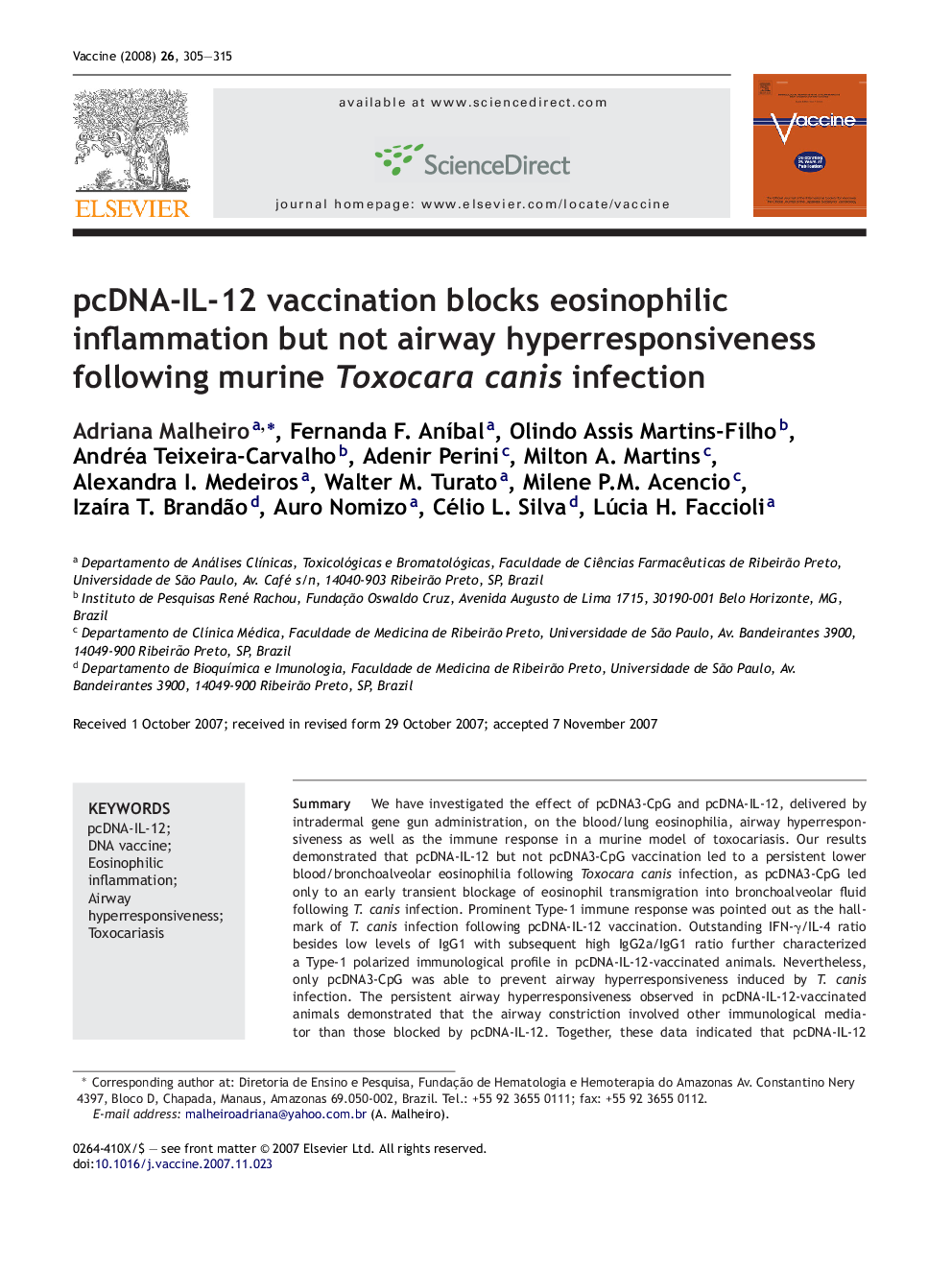| Article ID | Journal | Published Year | Pages | File Type |
|---|---|---|---|---|
| 2407375 | Vaccine | 2008 | 11 Pages |
Abstract
We have investigated the effect of pcDNA3-CpG and pcDNA-IL-12, delivered by intradermal gene gun administration, on the blood/lung eosinophilia, airway hyperresponsiveness as well as the immune response in a murine model of toxocariasis. Our results demonstrated that pcDNA-IL-12 but not pcDNA3-CpG vaccination led to a persistent lower blood/bronchoalveolar eosinophilia following Toxocara canis infection, as pcDNA3-CpG led only to an early transient blockage of eosinophil transmigration into bronchoalveolar fluid following T. canis infection. Prominent Type-1 immune response was pointed out as the hallmark of T. canis infection following pcDNA-IL-12 vaccination. Outstanding IFN-γ/IL-4 ratio besides low levels of IgG1 with subsequent high IgG2a/IgG1 ratio further characterized a Type-1 polarized immunological profile in pcDNA-IL-12-vaccinated animals. Nevertheless, only pcDNA3-CpG was able to prevent airway hyperresponsiveness induced by T. canis infection. The persistent airway hyperresponsiveness observed in pcDNA-IL-12-vaccinated animals demonstrated that the airway constriction involved other immunological mediator than those blocked by pcDNA-IL-12. Together, these data indicated that pcDNA-IL-12 and pcDNA3-CpG vaccines have distinct therapeutic benefits regarding the eosinophilic inflammation/airway hyperresponsiveness triggered by T. canis infection, suggesting their possible use in further combined therapeutic interventions.
Related Topics
Life Sciences
Immunology and Microbiology
Immunology
Authors
Adriana Malheiro, Fernanda F. AnÃbal, Olindo Assis Martins-Filho, Andréa Teixeira-Carvalho, Adenir Perini, Milton A. Martins, Alexandra I. Medeiros, Walter M. Turato, Milene P.M. Acencio, IzaÃra T. Brandão, Auro Nomizo, Célio L. Silva,
